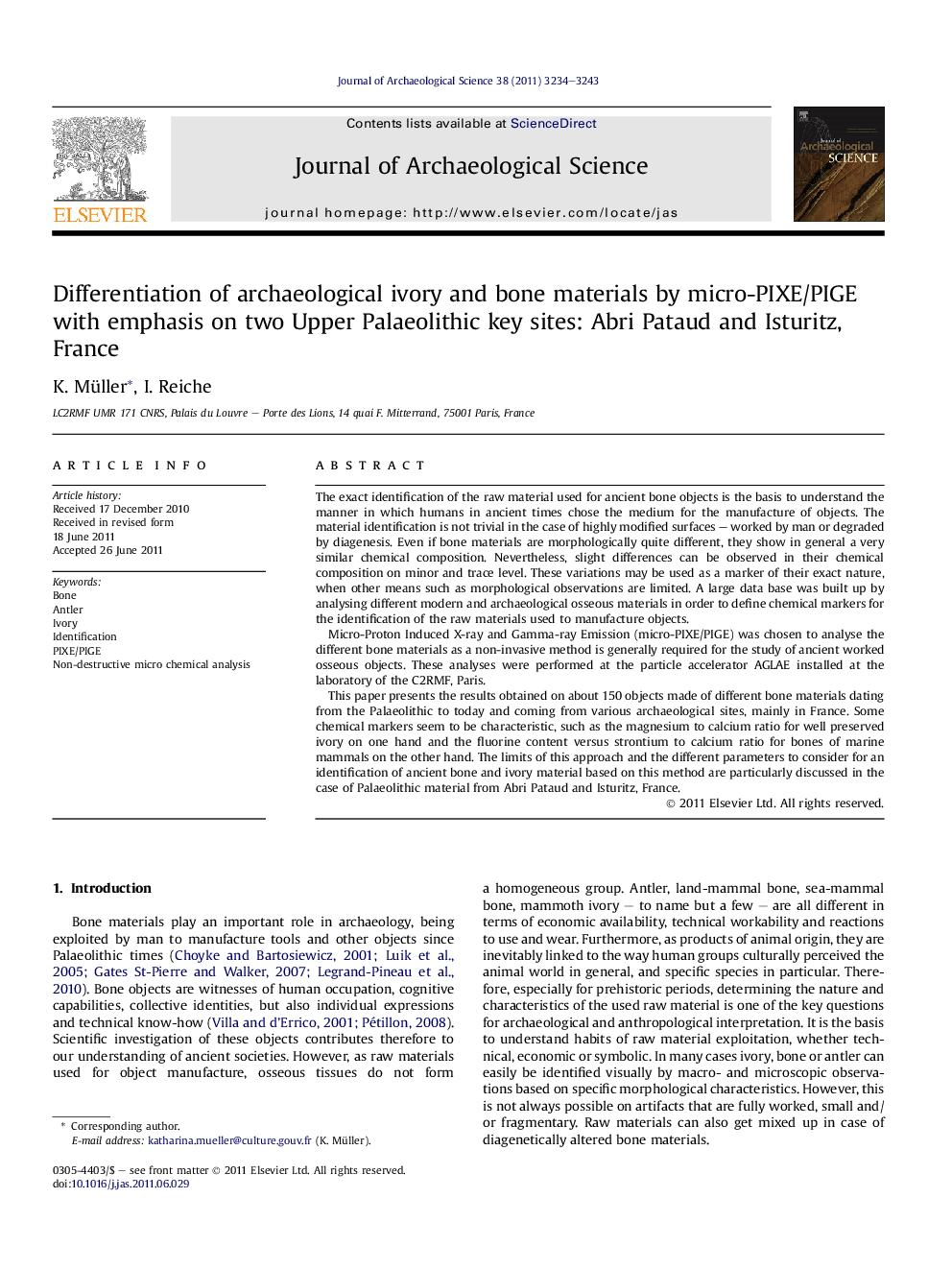| کد مقاله | کد نشریه | سال انتشار | مقاله انگلیسی | نسخه تمام متن |
|---|---|---|---|---|
| 1036000 | 943873 | 2011 | 10 صفحه PDF | دانلود رایگان |

The exact identification of the raw material used for ancient bone objects is the basis to understand the manner in which humans in ancient times chose the medium for the manufacture of objects. The material identification is not trivial in the case of highly modified surfaces – worked by man or degraded by diagenesis. Even if bone materials are morphologically quite different, they show in general a very similar chemical composition. Nevertheless, slight differences can be observed in their chemical composition on minor and trace level. These variations may be used as a marker of their exact nature, when other means such as morphological observations are limited. A large data base was built up by analysing different modern and archaeological osseous materials in order to define chemical markers for the identification of the raw materials used to manufacture objects.Micro-Proton Induced X-ray and Gamma-ray Emission (micro-PIXE/PIGE) was chosen to analyse the different bone materials as a non-invasive method is generally required for the study of ancient worked osseous objects. These analyses were performed at the particle accelerator AGLAE installed at the laboratory of the C2RMF, Paris.This paper presents the results obtained on about 150 objects made of different bone materials dating from the Palaeolithic to today and coming from various archaeological sites, mainly in France. Some chemical markers seem to be characteristic, such as the magnesium to calcium ratio for well preserved ivory on one hand and the fluorine content versus strontium to calcium ratio for bones of marine mammals on the other hand. The limits of this approach and the different parameters to consider for an identification of ancient bone and ivory material based on this method are particularly discussed in the case of Palaeolithic material from Abri Pataud and Isturitz, France.
► Chemical markers for the identification of archaeological osseous materials.
► Identification of ivory amongst other bone materials.
► Differentiation of marine mammal bones from antler.
► Chemical identification approach successfully applied to Palaeolithic artefacts.
► Diagenetic changes in the chemical can constrain the identification approach.
Journal: Journal of Archaeological Science - Volume 38, Issue 12, December 2011, Pages 3234–3243